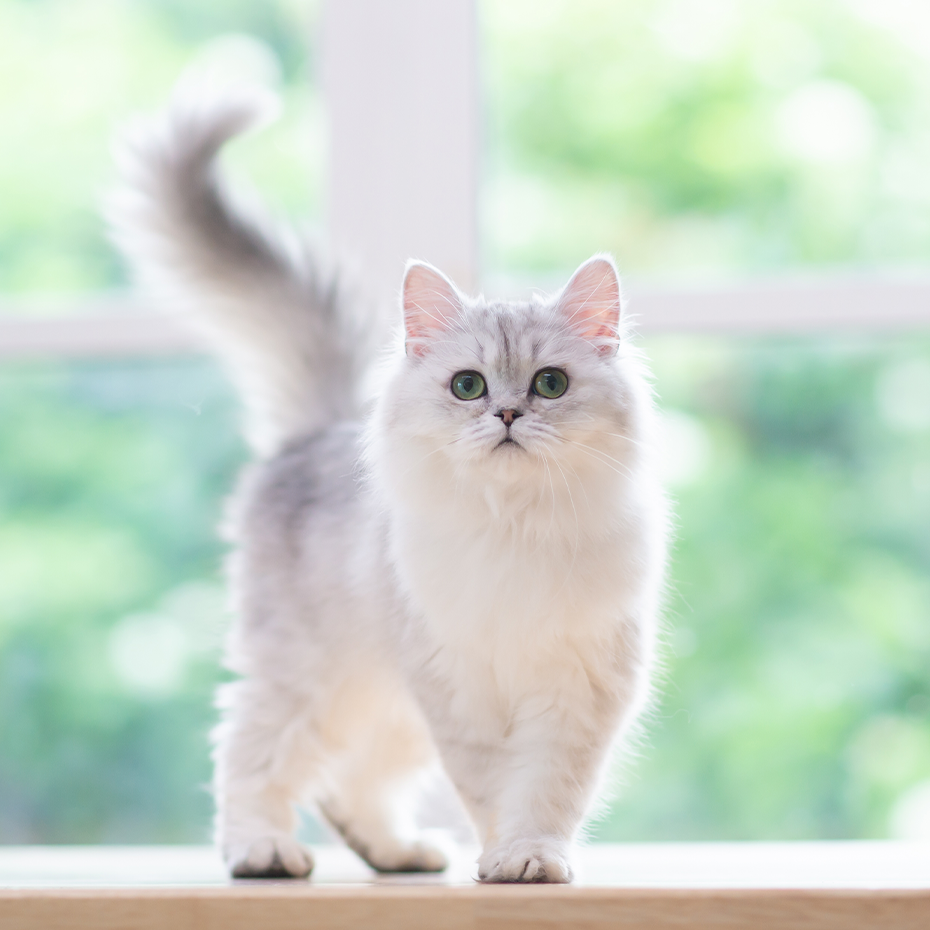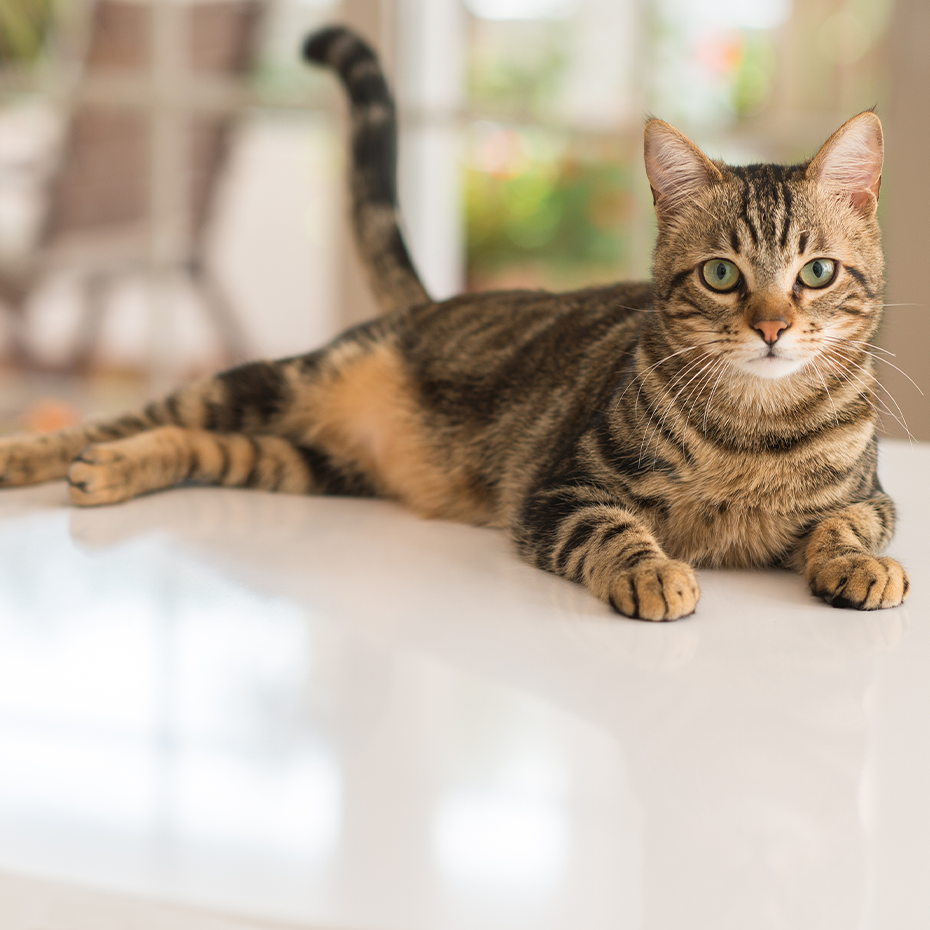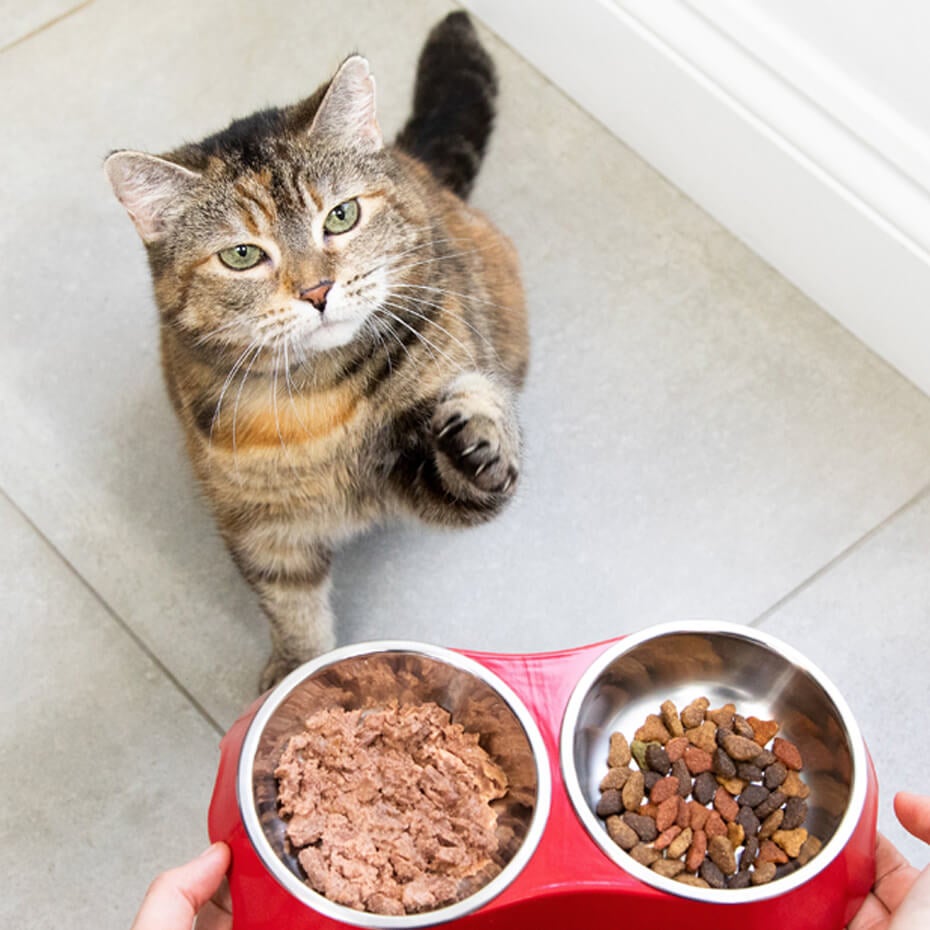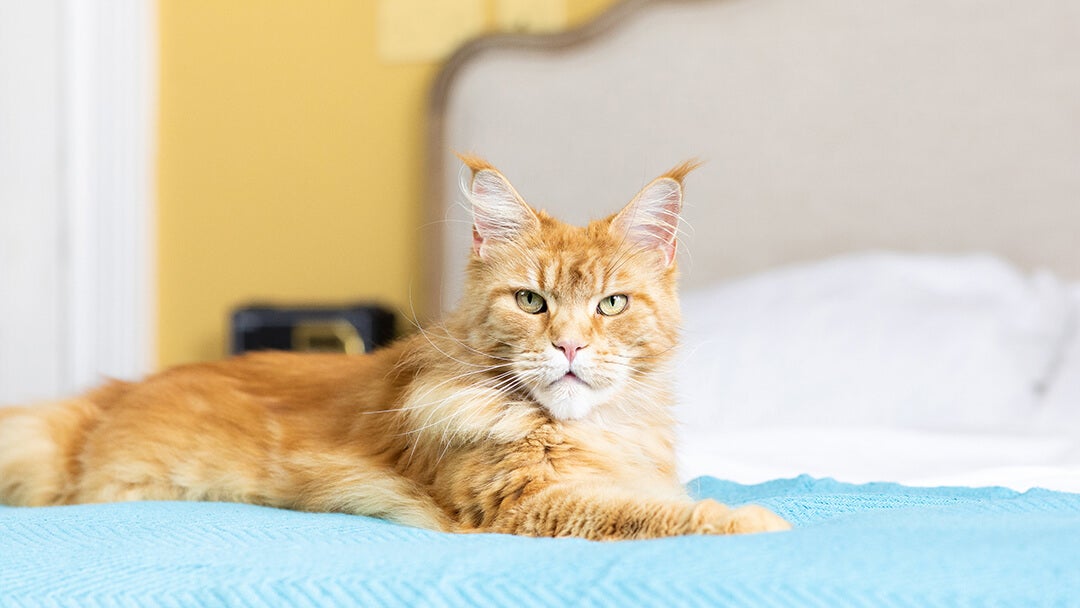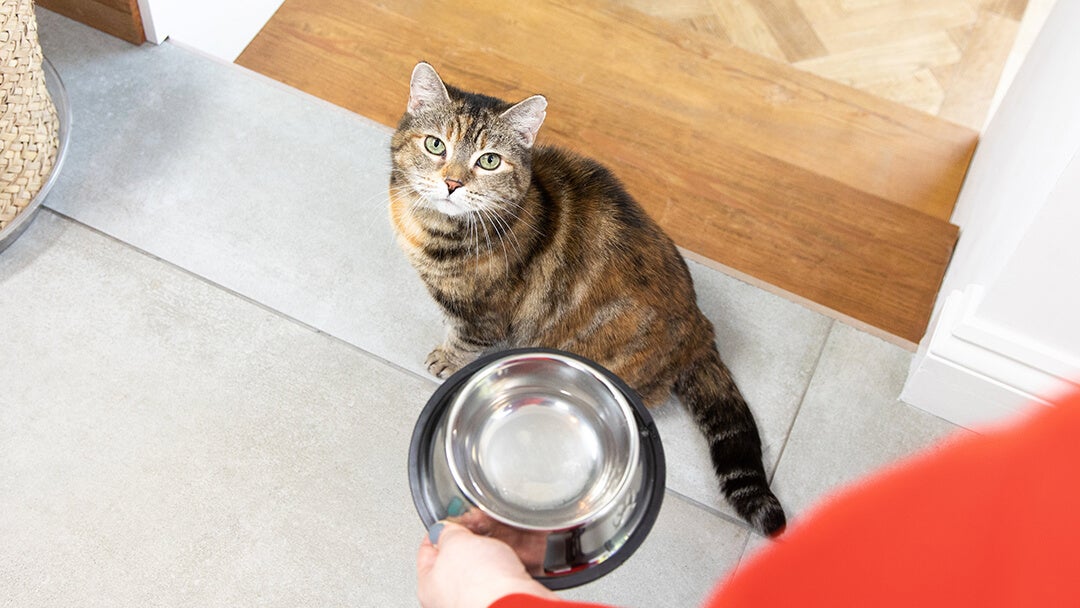
After your cat’s had an operation they might be out of sorts for a while, but with a bit of extra love and care from you, they’ll soon be back to pouncing, exploring and playing as normal.
Collecting your cat from the vet
When your cat is ready to come home, your vet will give you some advice for looking after them until they’re back on their feet. This advice will depend on your cat’s specific treatment, and should include check-up dates and any medicine your pet needs to help them recover. Each cat is different, so follow your vet’s advice and give them a call if you think your cat isn’t recovering properly; even if you’re just not sure what to do, they’ll be happy to help.
Even if your cat is usually an energetic bundle of fun, they’ll probably feel quite dozy after their anaesthetic, so don’t worry if they’re a little sleepy for a while. Despite this, check they’re eating enough to help them get better, and look out for any signs of pain.
As your cat will need rest, put their bed somewhere warm, safe and cosy, preferably where there isn’t a lot of noise or people coming in and out – ask the family to resist the temptation to all go and say ‘hello’ to your cat all the time!
Try to keep children and other animals away from your cat to help make sure they get the best rest possible. If your brave cat isn’t back to normal after 12 hours, it’s a good idea to call the vet to see if anything’s wrong.
Feeding after cat surgery
When your cat wakes up from their anaesthetic they might feel a bit nauseous, and they might not be up to a bowl of their usual food. After their operation, offer them something small and light – most cats love things like chicken and fish, and since they’re also nutritious these are good post-operation meals.
If these aren’t options for you, just use their normal food but only give them a quarter of what they would normally have. Your vet might even give you a specific type of food to feed your cat. Whatever meal you provide, make sure they have lots of clean water to go with it.
Exercise
Even if your cat usually loves the great outdoors, it’s not a good idea to let them roam free until they’re fully recovered. If they have a bandage, this could get caught or become soiled, and your pet won’t be as good at running away from danger as they’re used to.
Keep your cat indoors until either their stitches have been removed or your vet tells you it’s okay. Even when they’re indoors there’s plenty of mischief they can get up to that might not be good for them! Try to prevent your cat from running up and down the stairs, climbing up interesting-looking things, and playing too hard with other pets.
To make things easier, your cat might be better off staying in one room. Your vet might give you extra instructions, such as keeping your cat in a cage after orthopaedic surgery, so in all cases just do as they advise.
Cat wounds and stitches
Normally your cat’s stiches will be removed after about ten days, but as every cat and every procedure is unique, this might be different for you. Luckily some stitches are hidden under the skin and dissolve by themselves, so there’s even less to worry about. Your vet will let you know exactly what kind of stitch your cat has, and tell you whether they need to be removed.
Depending on the procedure your cat has had, they might have wounds closed with stitches, staples, or even internal sutures. Have a look at the area every day, and if there’s anything unusual like redness, swelling, discharge or bleeding, ask your vet for advice.
Cat bandages
Luckily cats tend to be less fond of splashing around than their canine friends, but if your cat has bandages make sure they stay dry. Damp bandages can cause more damage to the wound beneath and delay your cat’s recovery, so don’t let them outside until they’re fully recovered.
In most cases things are fine, but keep an eye out for warning signs such as unusual or unpleasant odours, discolouration, and swelling around the bandage. Equally, if your cat is limping or appears to be in pain it’s a good idea to contact your vet for some specific advice.
Last of all, make sure your cat goes back to the vet for their check-up appointment, or even earlier if the bandage is loose or something seems wrong.
Plastic collars for cats
Just like dogs, cats might need a plastic collar to stop them licking their wound. Soft fabric ones are also an option – as long as it stops your pet licking, biting, or scratching the wrong place. Your cat should wear the collar all the time, including at night, as when they’re left alone the temptation to chew their wound might be too great.
If the collar makes eating or drinking more difficult for your cat, take it off just for mealtimes and make sure it goes back on as soon as they’ve finished. It’s difficult to make them wear something they don’t enjoy, but remember it’s for their own good – and the more they have their collar on, the sooner they’ll get better.
If your cat is recovering from a neutering procedure, you might also want to have a look at our Neutering FAQ for more specific tips on your cat’s post-operation care.
